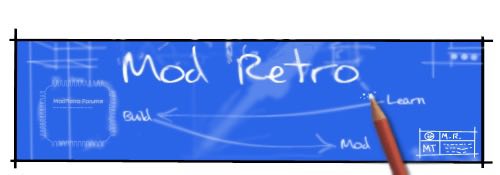Blargaman91
Well-Known Member
While I'm still waiting for a reply on my post about the best kind of case for the portable, I'm starting my "worklog". I don't think progress can be made with this portable for quite a while, but I am full of questions.
To start off... what the heck, Sega? Your controller is jacked up. I'm seriously unsure how to approach the analog stick and triggers. I don't want to have to use hall sensors in my portable considering all the trouble it may be, so I'm looking for a way to use normal potentiometers. My findings are as follows:
Going to the main controller CPU, the L and R triggers send 1v in their neutral position and about 3v pressed all the way down, hard.
The X and Y axes stand at about 2.7v in their neutral position, 1v at their lowest (left on X, down on Y), and 4v at their highest (right on X, up on Y). I think these numbers are correct, but I might be remembering wrong.
I did only a little experiment and I'm not sure it's possible to make a normal potentiometer-style analog stick fit those parameters. Is it?
And maybe this is all for naught, because I feel like, as always, 3rd party controllers take the easier route and use potentiometers. Do they? I only own official ones.
My next one's about cooling. The metal shielding covering the processors is a pretty large one, but that fan looks pretty tiny. If I can somewhat keep the original shielding and use a better thermal conducting compound, will I really need a fan at all? I know there's more than processors producing heat in a portable, so I figure the answer is yes anyway...
And also, about that fan, what is the deal with the Dreamcast needing it to be plugged in to boot? Is there some fequency produced, some resistance provided, or anything of the sort? I watched a video of the IntoDream and heard a mention that the "wires can't be extended" from the fan to the motherboard. What's that about...?
Regarding VGA as well, I'm unclear on whether all games can work with it or not. I know that some games aren't compatible but I also hear that there is some kind of trick to making them work. Is it possible through whatever trick that is to make any game work?
And, since I just remembered, does anyone know just what 12v is used for? It appears to draw about 60 mA in-game, obviously not much, but it's something, considering the system can't boot without it.
I think I'll have pictures in my next post to make things a little more interesting...
To start off... what the heck, Sega? Your controller is jacked up. I'm seriously unsure how to approach the analog stick and triggers. I don't want to have to use hall sensors in my portable considering all the trouble it may be, so I'm looking for a way to use normal potentiometers. My findings are as follows:
Going to the main controller CPU, the L and R triggers send 1v in their neutral position and about 3v pressed all the way down, hard.
The X and Y axes stand at about 2.7v in their neutral position, 1v at their lowest (left on X, down on Y), and 4v at their highest (right on X, up on Y). I think these numbers are correct, but I might be remembering wrong.
I did only a little experiment and I'm not sure it's possible to make a normal potentiometer-style analog stick fit those parameters. Is it?
And maybe this is all for naught, because I feel like, as always, 3rd party controllers take the easier route and use potentiometers. Do they? I only own official ones.
My next one's about cooling. The metal shielding covering the processors is a pretty large one, but that fan looks pretty tiny. If I can somewhat keep the original shielding and use a better thermal conducting compound, will I really need a fan at all? I know there's more than processors producing heat in a portable, so I figure the answer is yes anyway...
And also, about that fan, what is the deal with the Dreamcast needing it to be plugged in to boot? Is there some fequency produced, some resistance provided, or anything of the sort? I watched a video of the IntoDream and heard a mention that the "wires can't be extended" from the fan to the motherboard. What's that about...?
Regarding VGA as well, I'm unclear on whether all games can work with it or not. I know that some games aren't compatible but I also hear that there is some kind of trick to making them work. Is it possible through whatever trick that is to make any game work?
And, since I just remembered, does anyone know just what 12v is used for? It appears to draw about 60 mA in-game, obviously not much, but it's something, considering the system can't boot without it.
I think I'll have pictures in my next post to make things a little more interesting...
